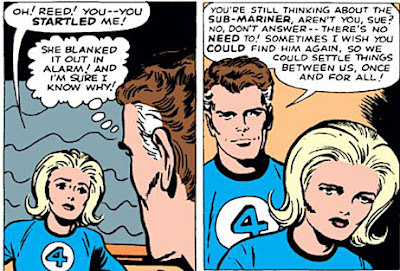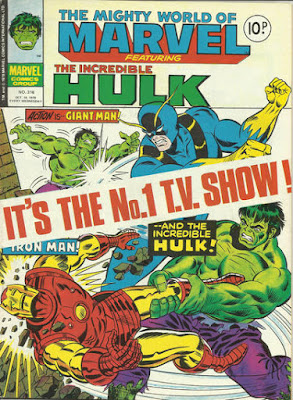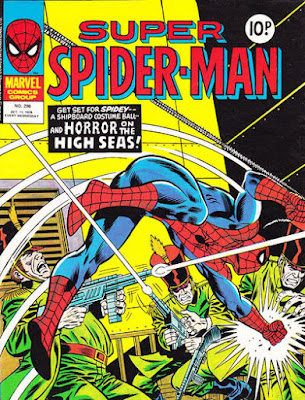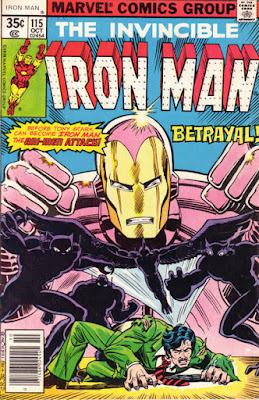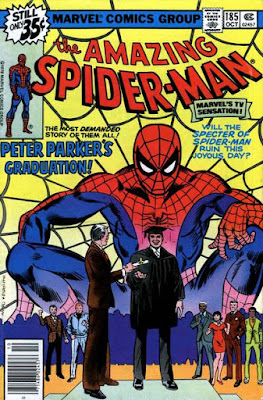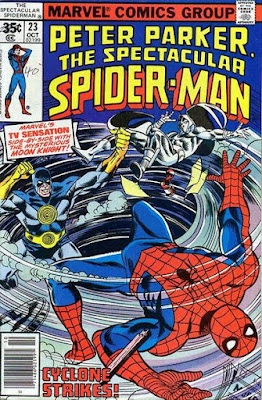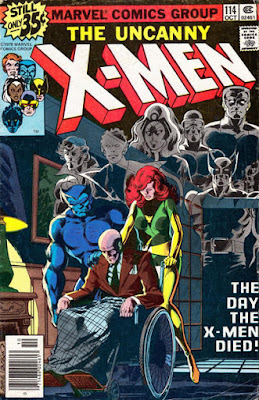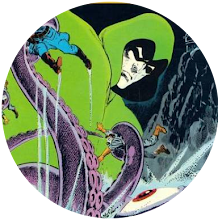It can only mean one thing.
That it's time to take a face-first leap into terror and look at what the short-lived Atlas Comics had to offer us in terms of horror.
Of course, a more cynical man than me might argue that the entire history of Atlas Comics is a horror story but I'm not that cynical man and, so, I shall, instead, take a look at the only horror comic by them that I ever owned.
And that was Tales of Evil #1.
It kicks off with Spawn of the Devil in which a madman puts the spirit of Satan into a doll which then takes possession of a young girl who goes on to kill everyone she knows, before transforming into the devil and flying off to unleash yet more evil upon the world.
 It's a strange story that makes little sense (why does the devil want to inhabit a doll?) and, unusually for a comic book horror story, seems to contain no moral. The victims are innocent people who've done nothing to bring their fate down upon themselves. They just happen to be unlucky.
It's a strange story that makes little sense (why does the devil want to inhabit a doll?) and, unusually for a comic book horror story, seems to contain no moral. The victims are innocent people who've done nothing to bring their fate down upon themselves. They just happen to be unlucky.I must confess I find this lack of a moral compass somewhat refreshing and I do approve of its bloodthirstiness which, to me, seems to be much livelier than was normal in mid 1970s mainstream colour horror comics.
Next up is A Matter of Breeding, in which two wig makers concoct a cure for baldness, which turns their wealthy client into a homicidal werewolf.
With a terrible inevitability, the toupee-ists get their comeuppance - but not before they've shipped ten thousand of those baldness cures to the public at large.
There's some sort of attempt made to convince us they're bad people who deserve what they get but, to be honest, they don't seem that bad to me. There's really no reason given for them to think there'll be any negative consequences to their actions and they're not really even ripping off their moneyed benefactor, so it's a somewhat odd attempt.
That's followed by Stake Out, in which a man agrees to spend a night in a cemetery that's reputedly the haunt of a vampire - only to mistakenly kill an actor who's playing a vampire in a movie being filmed in that graveyard.
Needless to say, as he's being taken away by the police, a chilling twist is revealed.
 The first and last tales are drawn by Jerry Grandenetti, while the middle story's drawn by Mike Sekowsky. All three yarns are written by Russ Jones, although he does hide behind a pseudonym for one of them.
The first and last tales are drawn by Jerry Grandenetti, while the middle story's drawn by Mike Sekowsky. All three yarns are written by Russ Jones, although he does hide behind a pseudonym for one of them.Anyone familiar with those two artists will know they had a much more vigorous style than many of the horror artists DC Comics was using at the time; the likes of E.R. Cruz, Alfredo Alcala, Alex Niño, Nestor Redondo and many others. While this means the book looks less sophisticated and stylish than many of DC's ostensibly similar horror monthlies, it's also noticeably more lively. This, coupled with the lack of any desire to distinguish between right and wrong, means the book is simple-minded fun.
Sadly, none of that vigour was enough to save it and, after just three issues, Tales of Evil disappeared, like a phantom, from the news racks, never to be seen again, a feat that numerous Atlas titles managed to replicate.
Did it reinvent the horror comic? No. Did it leave a lasting impression within the minds of all who read it? Probably not. But, like all Atlas Comics, it's hard not to have an affection for it that's out of all proportion to its actual merits as a comic.





